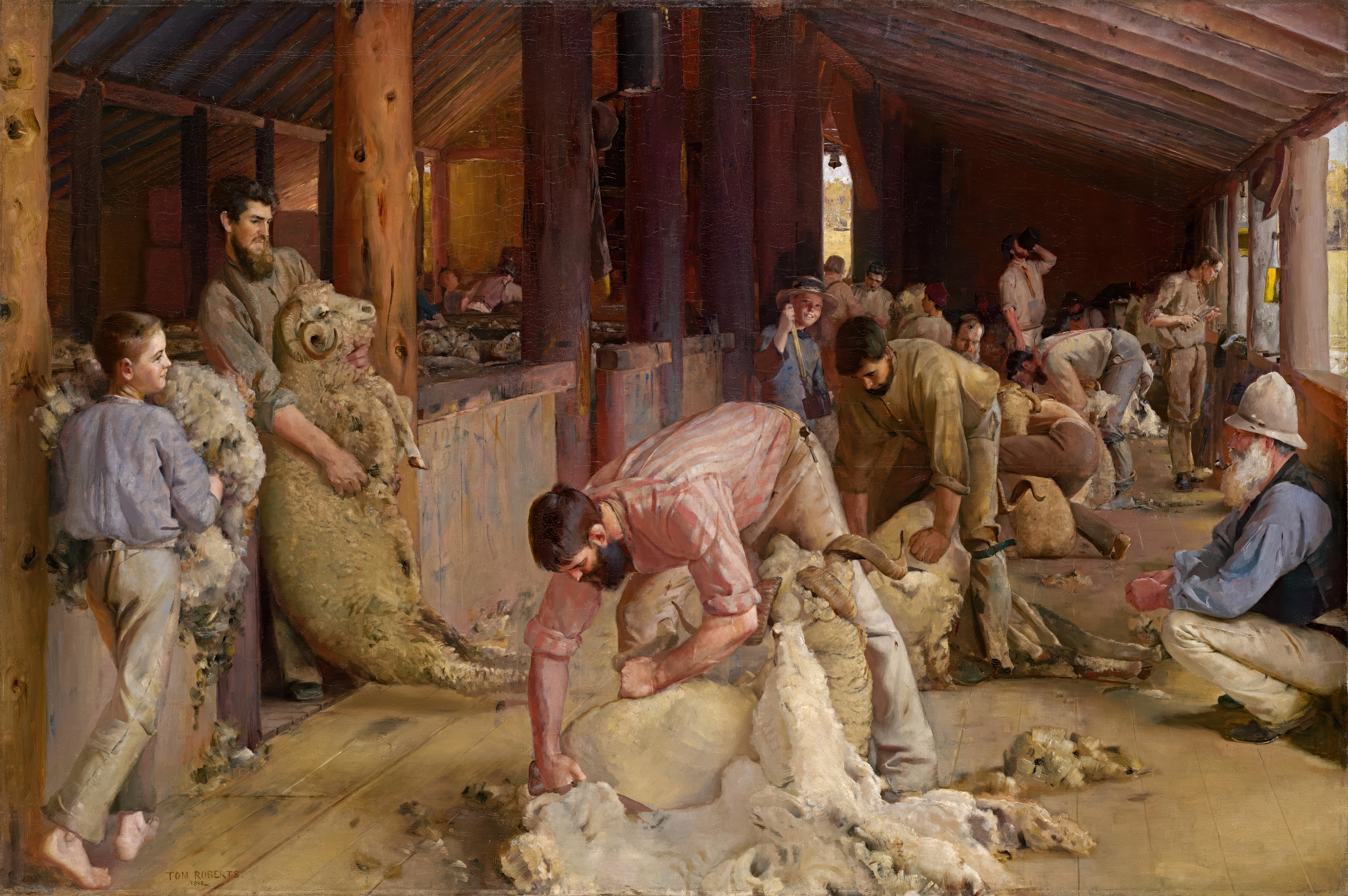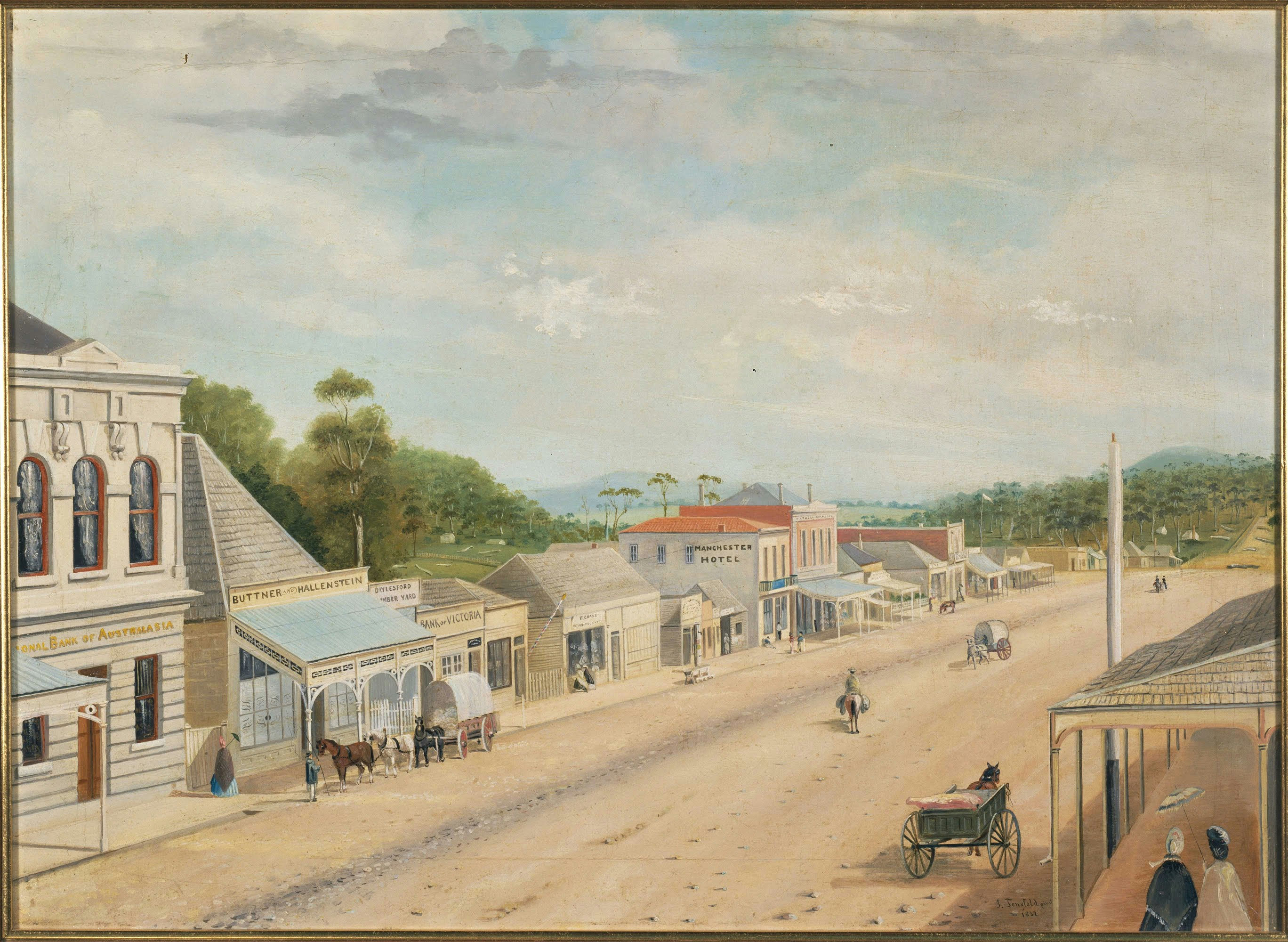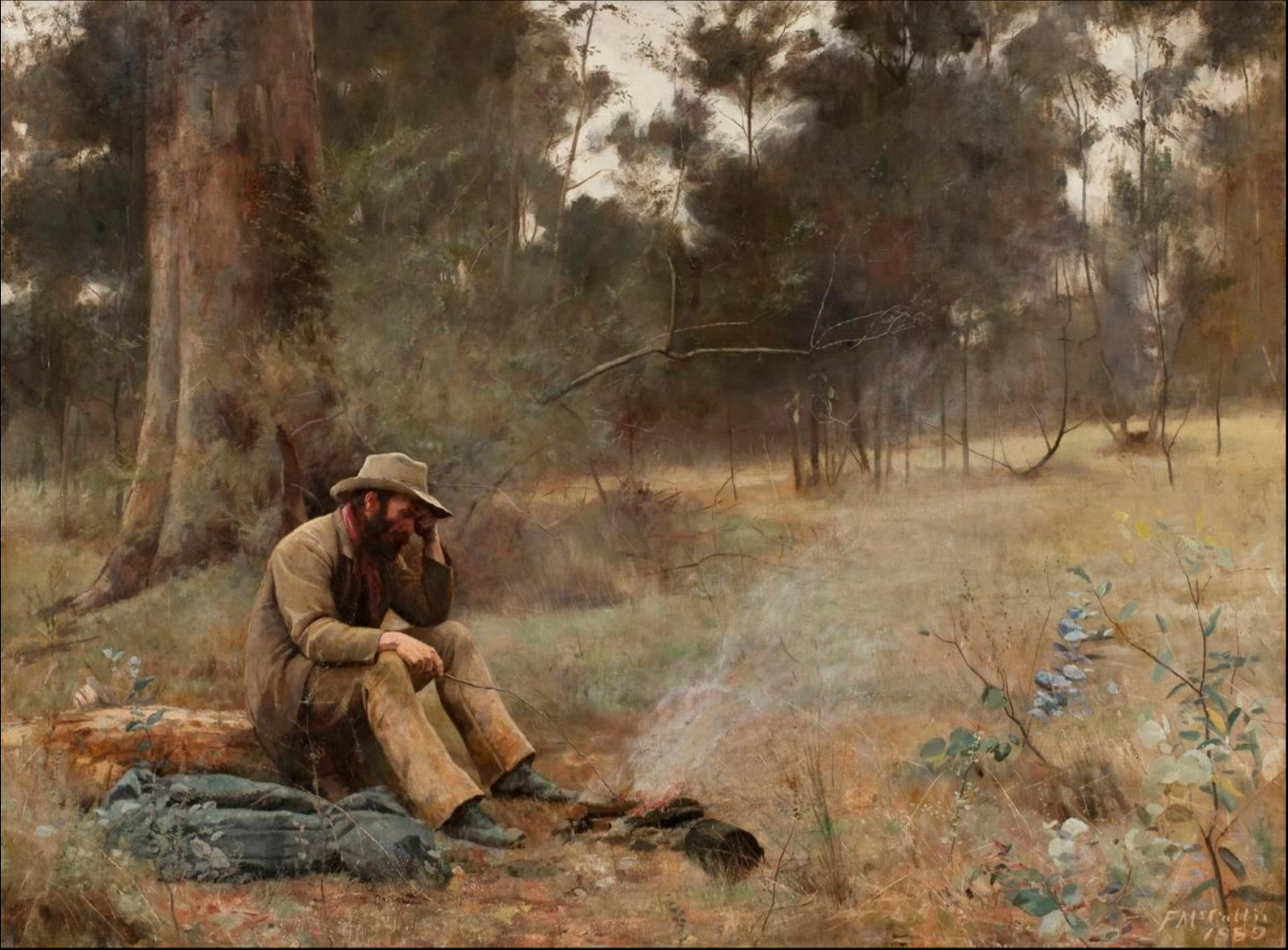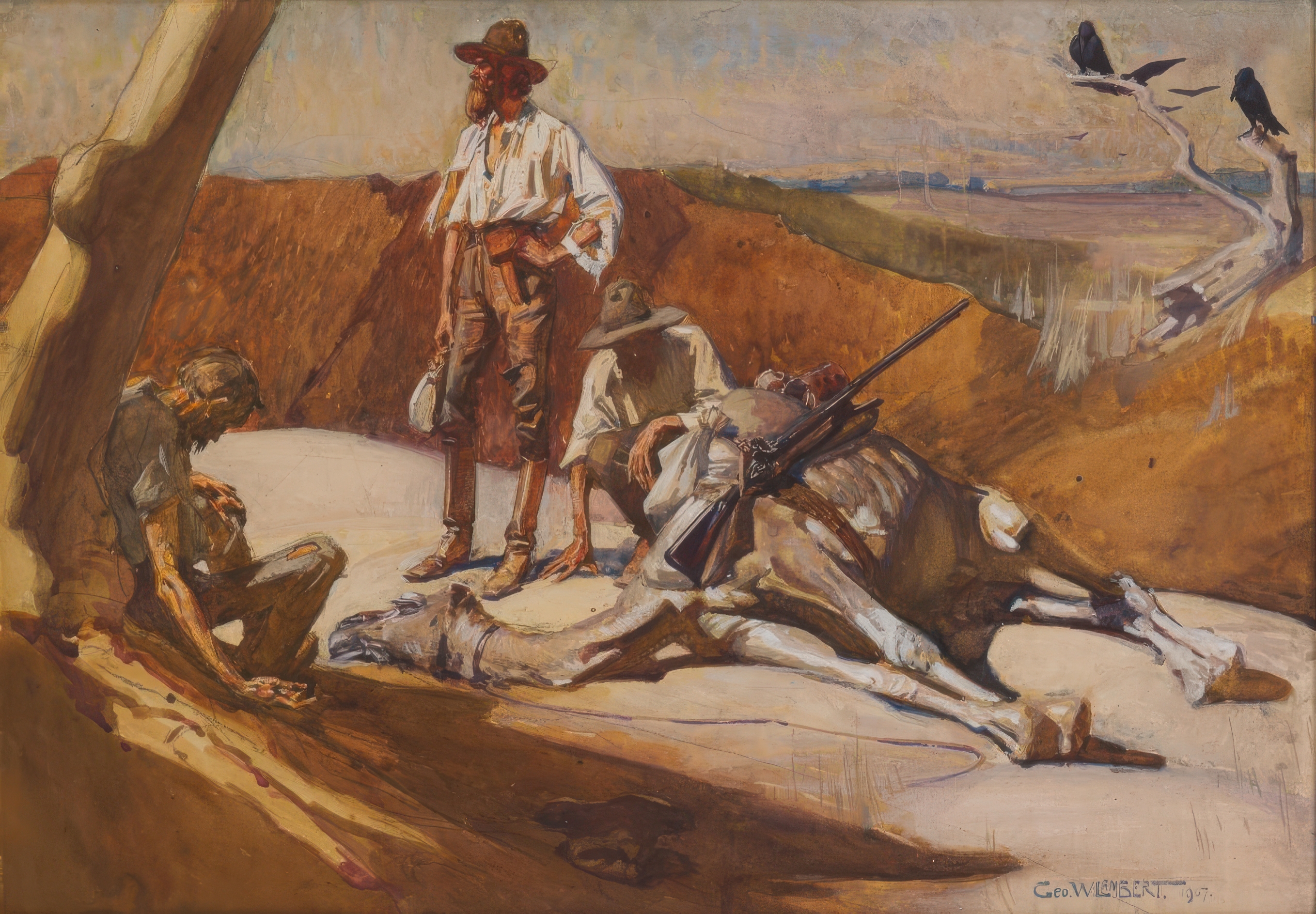The Bush Culture
Settlers and Bushmen
The act of settlement produced a unique Australian culture and a corresponding cast of character types.
This culture is known as the Australian bush culture. This culture is the beating heart of life in Classical Australia and to this day remains central to the way Australians view themselves: the so-called Australian legend.
The men of the bush culture came in different shapes and sizes. What they had in common was the experience of a rough, rural lifestyle that faded as society became more urbanised.
Explorers travelled vast distances and documented what they saw. Bushrangers lurked in the forests and preyed on unwary travellers. Drovers moved vast herds and flocks through the wild, making meat a normal part of the Australian diet. Prospectors, known as fossickers, searched for gold and swagman, itinerant labourers, walked from village to village, searching for work. Shearers cut the fleece off the sheep and settlers built their homesteads by hand. Farms, orchards, and estates sprang up accompanied by thousands of country towns and villages, and in later times by railways and the overland telegraph.
This culture was accompanied by the development of an Australian dialect of English, rich with bush allusions.
This was all done to the backdrop of the European 'Age of Enlightenment' in which science came to influence every corner of life. By the end of the 1800s, for instance, the science of selective breeding had resulted in Australian of sheep producing seven times as much wool as those on the First Fleet and the creation of new species of domesticated wheat resistant to draught and disease. This helped Australia to achieve the highest quality of life ever recorded in human history.
Classical Australia did more with its short time on the earth than societies with much greater antiquity.



